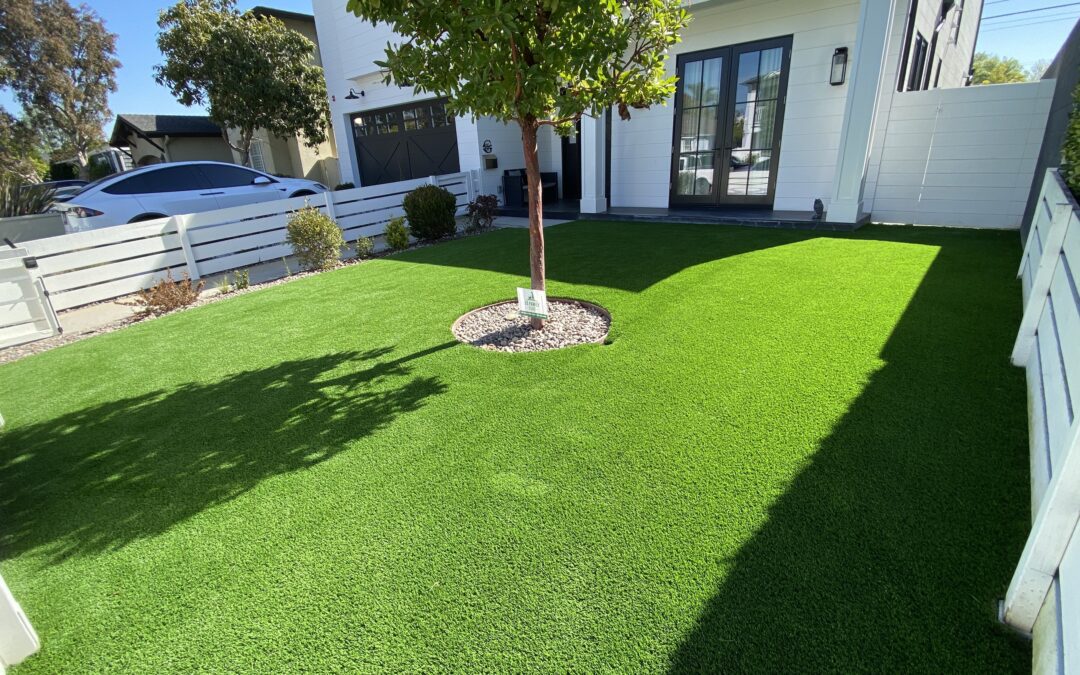Although artificial turf, commonly referred to as synthetic grass or fake grass, has been around for a long time, it has recently gained popularity due to its low maintenance requirements and adaptability. The main design and installation trends for artificial turf that are influencing the market will be covered in this blog.
- Natural looking Turf
The transition to grass that seems more natural is one of the most important trends in artificial turf. The days of artificial turf that is bright green and plastic-like are long gone. Modern artificial grass has multi-colored blades that resemble real grass and vary in color and texture to give the impression of real grass.
2 . Environmentally Friendly Materials
The use of environmentally friendly materials is another trend in the design and installation of artificial turf. Synthetic turf used to be produced using petroleum-based materials that couldn’t be recycled. Today, however, a lot of firms build the turf using recyclable materials, including discarded tires. This lessens the product’s carbon footprint in addition to reducing trash.
3. Comfort and Softness
In the past, artificial grass was infamous for being rough and difficult to walk or play on. However, producers are producing softer and more pleasant turf thanks to technological and material breakthroughs. This is crucial for playgrounds and sports fields where kids and sportsmen require a cushioned surface to prevent injury.
4. Smart Turf
Smart turf technology is entering the artificial turf market. Smart turf has sensors that can measure temperature, moisture content, and other elements that affect the performance and health of artificial grass. With the use of this technology, field managers can keep an eye on and modify the turf’s conditions to maintain optimal performance.
5. Versatile Designs
Sports fields and golf courses are no longer the only places to find artificial turf. Today, artificial turf is used in a variety of settings, including indoor spaces and rooftop gardens. As a result, manufactures are developing more adaptable turf patterns that can be altered to suit any area or style.
6. Easily Maintained
Artificial turf has several benefits, but one of the biggest is how little upkeep is needed. Contrary to natural grass, which needs to be watered, cut, and fertilized frequently, synthetic turf just needs to be cleaned on occasion to keep debris off of it and preserve its appearance. Because of this, more individuals are choosing artificial turf, especially in regions with severe water limitations.
7. Better Drainage
The design and implementation of better drainage systems for artificial turf is another development. Synthetic grass used to be known for having bad drainage, which might result in flooding and standing water. However, more recent designs feature drainage systems that let water to pass through turf and into the ground, preventing water accumulation and lengthening the life of the turf.
8. Durability
Artificial Grass is now more durable than ever thanks to development in materials and technology. Modern turf is resistant to wear and tear and can tolerate high foot traffic, harsh weather, and even sports activity. Due to the endurance, synthetic turf is a great investment for both residential and commercial uses.
Artificial grass is becoming more realistic, adaptable, and eco-friendlier than ever before thanks to new designs and materials in the artificial turf business. Whether you are searching for a sports field, playground, or a lovely lawn that needs little to no maintenance, artificial turf may be a great option for you!

